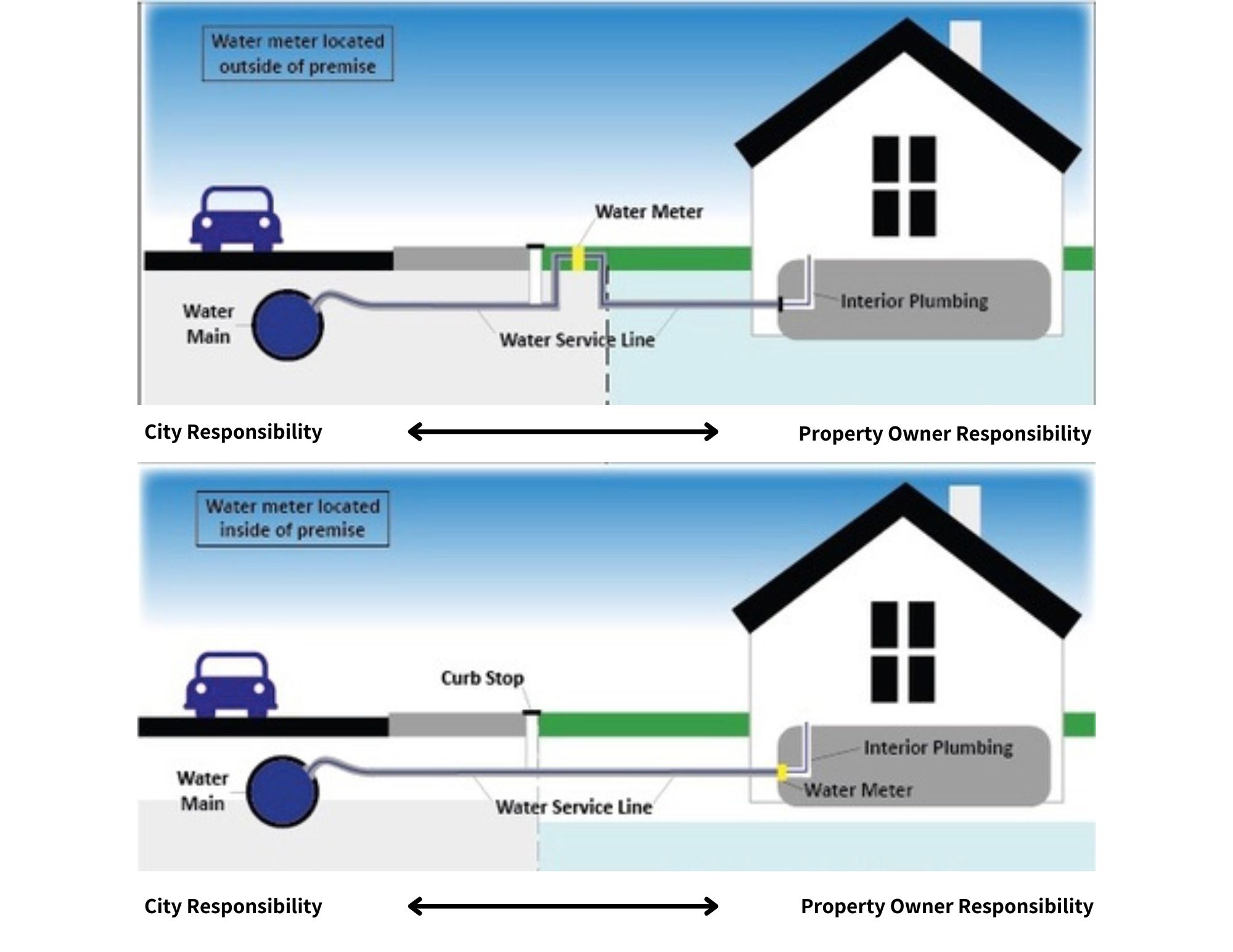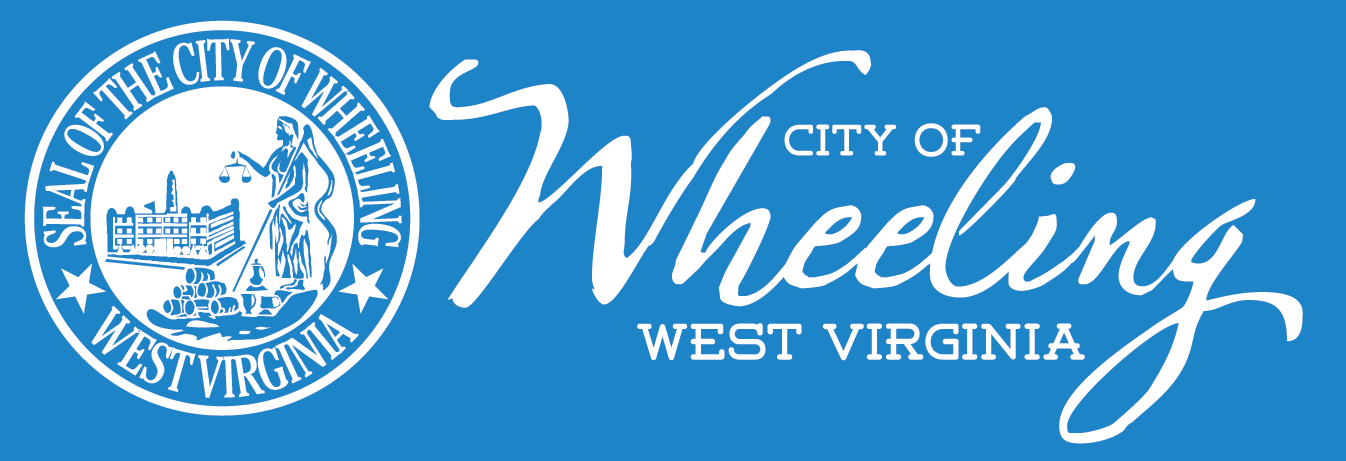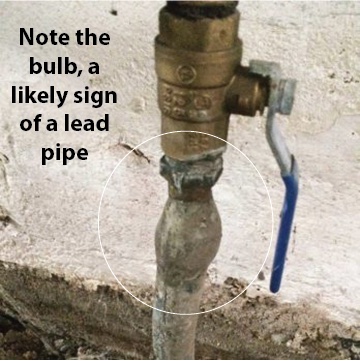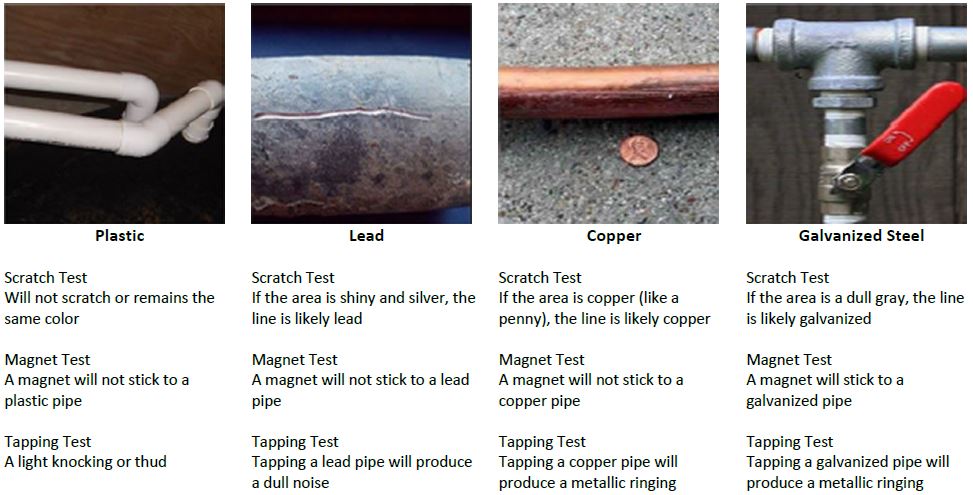If you are aware of the material comprising your water service line, click here or scan the QR code to proceed directly to the Water Service Line Inventory survey.  |
| Welcome |
Thank you for visiting our Water Service Line Inventory page. Below is a brief three-step process to help you gather information on your water service line. Please take time to read through each step. The service line is the water line that runs from the meter into your home or business or from the property line to your home or business. The images below demonstrate where Wheeling Water Department’s responsibility ends, and the home/business owners begins for interior and exterior meters. to read through each step. The service line is the water line that runs from the meter into your home or business or from the property line to your home or business. The images below demonstrate where Wheeling Water Department’s responsibility ends, and the home/business owners begins for interior and exterior meters. This inventory is being conducted in response to Environmental Protection Agency (EPA) rules. These rules require that water utilities identify the material of water service lines in local homes, businesses and schools. Prior to this rule, the Wheeling Water Department only maintained records to the property line and/or meter, given that the owner of the property is responsible for the water service lines on their property. The primary purpose of the EPA’s ruling is to identify homes that have lead water service lines. These were commonly installed in homes constructed prior to 1986. If you are not the owner of the residence or business, you may complete this process or notify the owner and request that they complete the inventory. To date, the Wheeling Water Department has mitigated water service line lead exposure by replacing lead service lines as identified. This program has been in existence for decades. It’s similarly important to note that we use an anti-corrosion chemical that prevents lead and other metals in the pipes from leaching into the water. This corrosion inhibitor coats the inside of lead pipes and fixtures with a thin, protective layer that reduces leaching and flaking. This is part of the reason why we have not identified lead in drinking water when random samples are tested as required. If you have questions, please contact us at (304) 234-3849 or via email at water@wheelingwv.gov. Here is a simple three-step process for completing the inventory. |
1. Getting Started - Locating Your Service Line
If not, begin by locating your water meter. Most water meters are located close to the street near the curb or sidewalk. Look for a metal or concrete lid with “Water Meter” or “Water” written on the top. Your main water service line will run underground from this meter in a straight line to the closest wall of your house. Because we live in an area prone to freezing, this line will emerge in a basement or first floor if the home does not have a basement. A valve will be attached to the line as it enters the house, so a good idea is to look for it. Keep in mind that this valve could be near the floor or above your head in floor joists. If your basement is finished it is possible that the valve has been covered. Look for access panels in ceilings, on walls or even in closets. If you are unable to locate your water service line, it may be beneficial to contact a plumber. They can both locate your line and help determine the material of the line. |
2. Identifying Water Service Line Material Now that the service line has been located, it’s time to determine its type. Water service lines can be plastic (PVC), copper, galvanized steel, or lead. A good place to start is a simple visual inspection.
If the pipe is metal, here are some steps that may be helpful in identifying the material of the pipe. Magnet Test Scratch Test
Tap Test Tap the line with a penny
|

 Let's begin with a question: Do you know where your water service line enters your home/business? If yes, move to Step 2.
Let's begin with a question: Do you know where your water service line enters your home/business? If yes, move to Step 2.

 When the material has been identified, the next step is to complete the survey located
When the material has been identified, the next step is to complete the survey located 